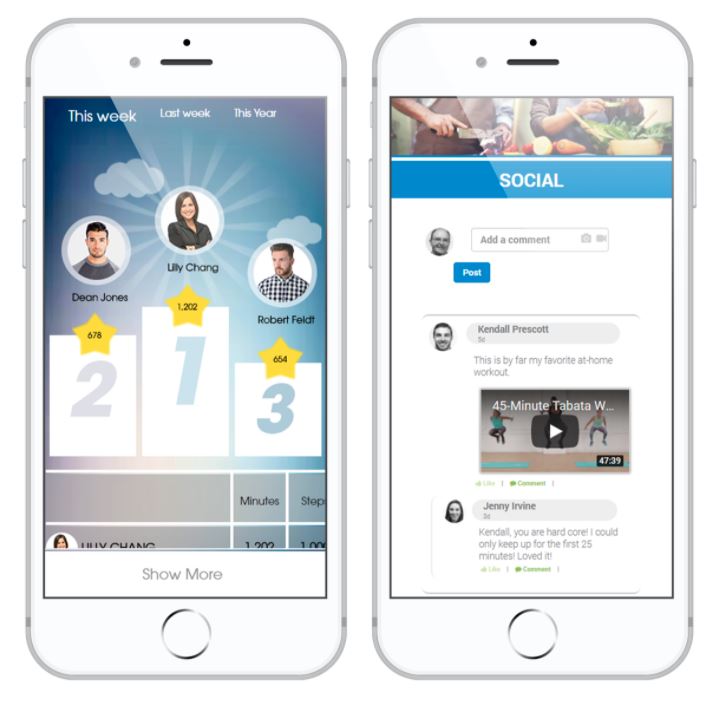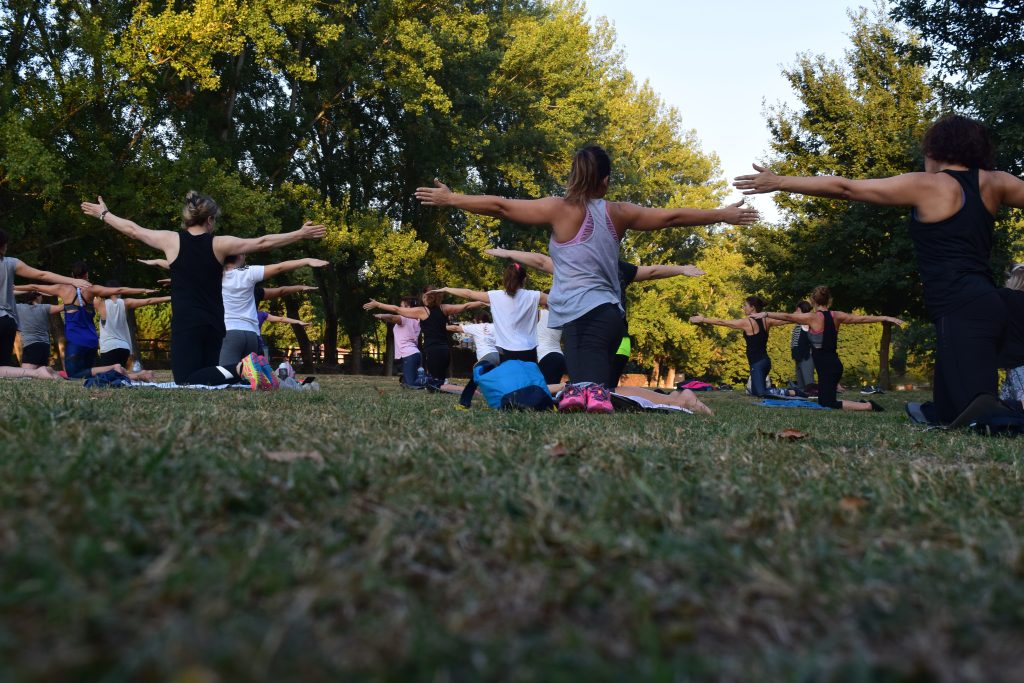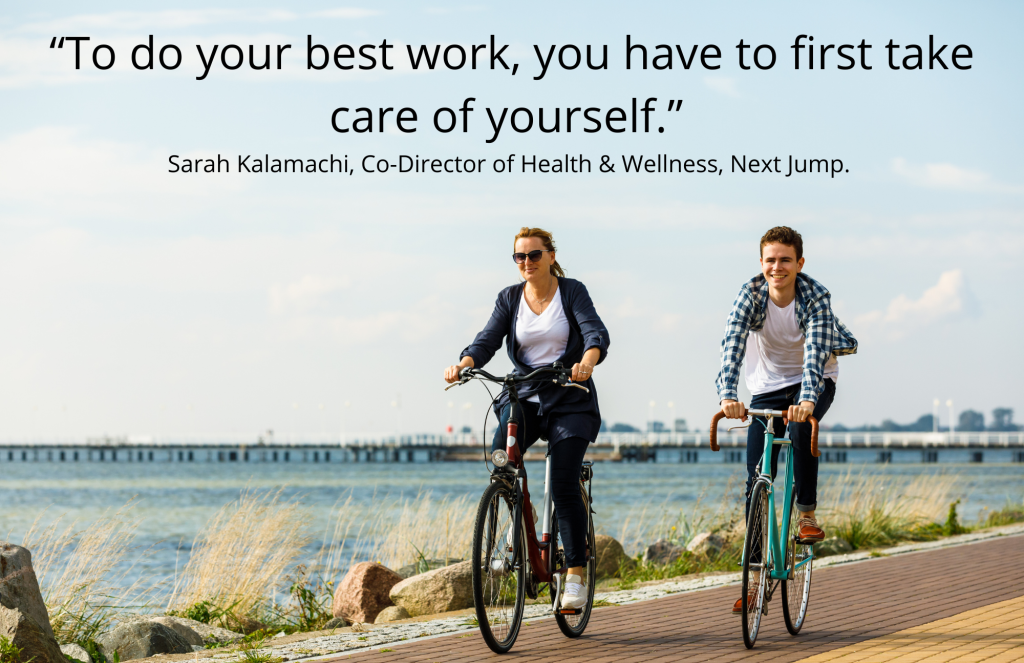Health and Wellness Programs in the Workplace For Employees
Workspaces filled with confined cubicles, beige boundaries, micromanaging bosses, and erratic demands for perfection are losing their appeal. As offices welcome staff back, many companies are prioritizing health and wellness programs in the workplace. But where should they start?

While creating a wellness program may seem straightforward, the challenge lies in getting employees to buy in. Regardless of whether the program costs a million dollars or ten, success depends on designing programs that work for individual employees. So, why not start with their needs?
RELATED: What is Workplace Wellness? A Complete Guide
Health And Wellness Programs In The Workplace Done Right
Primary Investigator Ron Goetzel of the Institute for Health and Productivity Studies at Johns Hopkins University led an analysis of companies that have “created a culture of health.” Through the compilation of complex data, Goetzel and his team found that health and wellness programs in the workplace over many years were, “not just good for workers, they’re good for business.”
From executives to employees alike, they discovered three companies achieving significant results, and they attribute it to their focus on workplace wellness: Next Jump, Johnson & Johnson, & USAA.

Next Jump
The NYC-based eCommerce company finds that a softer approach is a great asset when building a wellness program to change corporate culture. They’ve designed their health and wellness program in the workplace through a different kind of psychological and emotional coaching to help their employees manage their energy and ability through fitness and nutrition.
How they’re doing it:
- They encourage 20-minute breaks
- They surrounded their people with healthy snacks
- They offer classes like boxing and dancing on location
- They focus on activities designed for interaction like ping pong tables

Their wellness team encourages people to work out twice a week for as little as 20 minutes. They learned that if they provided an encouraging atmosphere along with easily obtainable goals, their employees are more inclined to participate and achieve the results they previously thought were unattainable, such as weight loss or learning a new skill.
Founder and CEO Charlie Kim states, “Since 2010, Next Jump saw a consistent five-year sales growth rate of 30%, [but from 2015-2017], it jumped to 120%, a fourfold growth rate and the only variable we moved was the continued investment in our people.”
Johnson & Johnson
It’s no surprise that the study includes the pioneer of workplace wellness, Johnson & Johnson. Their program has been in place for more than thirty years and their focus on employee well-being is a huge draw for many professionals.
As the largest global healthcare company, they focus on creating the healthiest employees in the world, believing a crucial component of their business is to bring out the best of their employees by having them fully present and engaged. Instead of focusing on programs, they’ve geared their efforts toward supporting a culture designed for the employees to choose what works best for them.
How they’re doing it:
- Their buildings are designed with fitness centers
- They offer daily lunchtime fitness classes
- They’ve designed their wellness program in a way that’s not a monetary motivation system
- They look at wellness on an individual level, designed to support what’s important to them
When people do something they care about, they’ll find more time to do it. Ownership of their own health is empowering. This ownership lets the individual take control of their wellness journey is an effective method for productivity and longevity.
USAA
Designated to service the banking and insurance needs of the military community, USAA has been actively working on its culture to promote wellness. They believe that in order to change culture it’s essential to have the upper leaders demonstrate change instead of just talking about it. Success is achieved when leadership can “walk the talk”.
It’s difficult for leadership to ask for and implement change if their employees don’t witness it happening actively around them. Lack of participation from leadership makes their own argument for wellness fall flat. Here, their CEO is down in the fitness center every morning, making it a part of a daily routine. They believe in modeling behavior from the top, knowing it has an inevitable trickle-down effect.
How they’re doing it:
- They’ve implemented energy zones within their buildings
- They have an onsite clinic free for employees
- They encourage their employees to walk around and be active
- They provide spaces designed to encourage actual breaks
Their employees are not using their sick days because they don’t need them. Even better, they are experiencing overall high-performance rates. They have an onsite clinic, so their employees don’t need to take time off for routine checkups. USAA recognizes that keeping their employees active will give them a little extra boost as they serve members, and they’ve worked on establishing a culture so they are postured to take care of themselves.
How To Easily Implement Health And Wellness Programs In The Workplace
Companies like the ones mentioned above share a common focus: prioritizing overall workplace culture rather than isolated programs. Making health a priority varies for each person, so why not design flexible programs that can be tailored to individuals instead of forcing them to fit into a one-size-fits-all program?

Working from a home office has taught us that balance is possible when divvying up tasks between career and family. Yet, many individuals working from home still miss the workplace. We are creatures of habit, and we like our routines. But for groups including parents, people with mental health issues, those experiencing general health issues, financial issues, or even personal issues, we’ve learned how crucial flexibility is and that it is possible to obtain balance.
Here are seven things the most successful and flexible wellness programs do to succeed:
#1 – Don’t Forget The Aesthetic

Who wants to stare at a blank plain wall, eight hours a day, for fiftyish weeks out of each year? Do your team a favor and break up the beige by adding interest.
- Encourage employees to bring in a display their own works of art or creations from their children or other family members
- Paint a wall a soothing color like green, proven to make us calmer due to the way we associate it with nature
- Don’t forget the plants! No green thumb, no problem. Fake plants have come a long way and will do the trick, or you can always hire a local plant service
- Give your employees something interesting to look at by investing in some wall art-support a local artist for bonus points
- Budget permitting, flowers are always an extra special touch, and have also been proven to boost moods
#2 – Invest In Healthy Snacks
Arguably one of the most underutilized wellness tools is providing access to healthy snacks. Ask any parent of a teenager how to get them to eat healthily, and chances are, they’ll tell you to make it easy for them. When people are hungry and have limited time, they’ll almost always choose their easiest option. So why not provide them options to boost their brainpower rather than drain it?
- Put out bowls of fruit with bananas, apples, or any kind that will stay good for a few days
- Look into healthy fruit and vegetable delivery services
- Set up an almond snack bar station
- Keep string cheese on hand
- Keep a supply of quick breakfast foods available such as oatmeal or bagels

#3 – Make Their Workspace Feel Healthy
A no-brainer idea for incorporating health and wellness programs in the workplace is to create a space that reflects the healthy lifestyle to which your business is aspiring. If a space promotes health, actions will follow. Make the healthy choice, the easy choice.
- Provide refillable coffee cups and water bottles
- Make hot and cold filtered water readily available
- Consider adding in massage chairs
- You might not be able to do a full gym, but think about stationary bikes, standing desks or even treadmill desks

#4 – Make The Planet A Priority
Lead by example and set up robust programs designed to support sustainability. Much of the population is extremely concerned about climate change. Showing an interest in not only the environment of the company but the environment as a whole is a great way to show your team that you care about their future.
- Set up efficient recycling programs and encourage repurposing
- Look into going solar
- Provide information on sustainability at home
- Give paid days for volunteering at local organizations
- Visit a local animal shelter and walk dogs with your team

#5 – Give Them Some Gear
People like free stuff. Who says bonuses must come in the form of a paycheck? Companies are often great at welcoming new employees in with swag, but make sure to think about little tokens of appreciation for the employees that have been there for you. It’s amazing what small acts of kindness and consideration can do to increase workplace culture.
- Start small by giving things like pedometers or stretch bands
- At significant milestones, surprise your employees with something unexpected that they might not buy for themselves, like an eBike
- Make sure their technology works with them, invest in good seating and desks that allow ergonomic posture
#6 – Don’t Forget The Toys
We’re all kids in some form or another. Instead of fighting against distractions, why not lean into it with pragmatic boundaries? Allowing people a little bit of playtime will absolutely get their minds off work, blow off steam, and give them a true break. It is often times just after a mental break that the most meaningful and impactful ideas come.
- If you have the space, consider hanging a basketball hoop somewhere on-site
- Provide frisbees, soccer balls, or hacky sacks in break areas
- Set up a chess board, and leave out a few decks of cards
- Have a TV displaying reels of silent funny videos in break areas
#7 – Kick Them Back Some Dough
While big businesses might have the liberty of providing sophisticated software to all their employees, it’s not as easy for the little guys. Instead of purchasing a “one size fits all” approach to health and wellness programs in the workplace, consider providing your employees funding for apps that know would benefit them rather than trying to make a guess or choosing for them. While mental health and weight management benefits are out of the question for many businesses, apps might not be.
- Talkspace and Betterhelp are just two platforms in the emerging market of online therapy, and their price structure might be within reach for smaller budgets
- Audible’s popularity and affordability make it an easy fit for any company, and employees are sure to be happy for the access
- MyFitnessPal and Noom are effective options that make healthy goals more obtainable
- Calm and HeadSpace are great apps to help reduce stress through meditation and help with sleeping

Health And Wellness Programs In The Workplace Are Here To Stay
Businesses that implement health and wellness programs in the workplace proactively foster a culture of well-being by understanding their employees’ needs. An inviting and vibrant workspace, as opposed to a drab and depressing one, encourages employees to attend work and stay longer. Beyond offering a good paycheck, showing employees they are valued involves investing time and thought into the environment where they spend most of their week.
Thanks to rapidly advancing technology, smaller businesses now have the ability to compete with large corporations. In today’s world, employees are increasingly resistant to rigid work schedules, making it crucial for companies to recognize and address these preferences. Meeting the needs of employees has been shown to help businesses achieve their goals more effectively. A satisfied and happy employee is the key to reducing turnover. Happiness in the workplace leads to better performance and higher retention rates.
The WellSteps team is committed to assisting businesses in incorporating health and wellness programs to create a better working culture. Often, even the smallest changes can make a significant impact!
Feeling inspired? So are we. Check out a few more ideas from our Wellsteps Blog:
